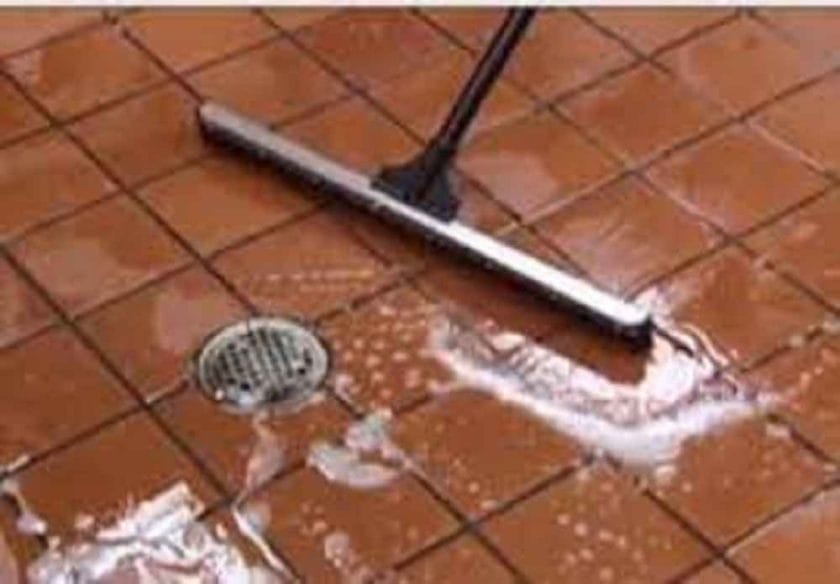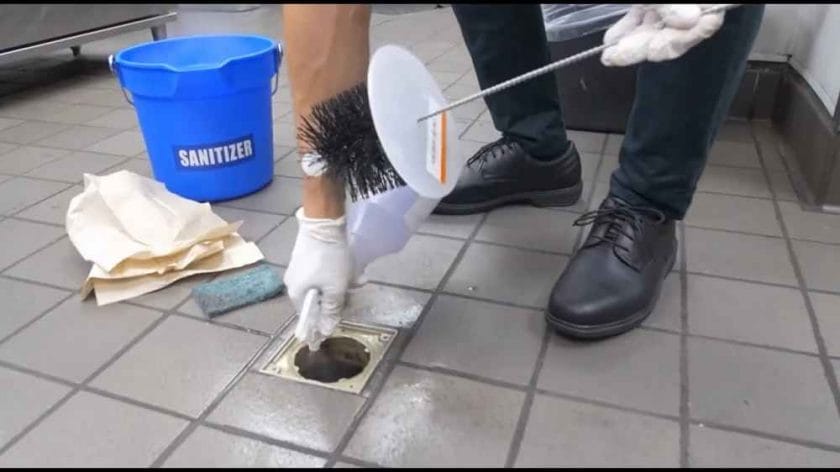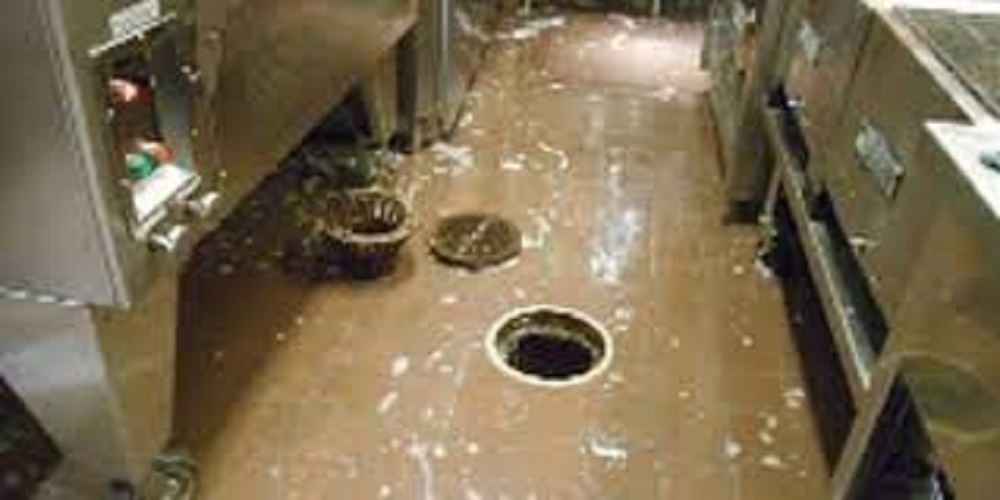Maintaining a clean and hygienic restaurant environment is crucial for ensuring the health and safety of both customers and employees.
Floor drains in restaurants play a crucial role in removing wastewater and keeping the floor dry, but they are often neglected in the cleaning process. Neglecting floor drains can lead to clogging, unpleasant odors, and even contamination of the food.
In this article, we’ll provide a comprehensive guide on how to clean restaurant floor drains effectively to ensure a safe and healthy working environment.
Understanding Floor Drains in Restaurants
What are Floor Drains?
Floor drains are a crucial component of a restaurant’s plumbing system. They are designed to remove wastewater, such as water from sinks, floor washing, and dishwashing, from the restaurant’s floor.
Floor drains are typically located in the kitchen, bar, and bathroom areas, and they come in various shapes and sizes.
Types of Floor Drains
There are several types of floor drains, including round, square, and linear. Round floor drains are commonly found in commercial kitchens, while square and linear floor drains are often used in industrial settings.
The type of floor drain used in a restaurant will depend on the type of flooring and the intended use of the space.
Location and Function of Floor Drains in Restaurants
Floor drains are typically located in areas where water is frequently used, such as near sinks, dishwashers, and floor washing stations. They are connected to the main sewer line, and their function is to remove wastewater from the restaurant’s floor and prevent water damage.
In a restaurant setting, it’s essential to keep the floor drains functioning properly to avoid unpleasant odors and potential health hazards.

Preparing for Cleaning
Safety Precautions
Cleaning restaurant floor drains can be a messy and potentially hazardous process, so it’s essential to take proper safety precautions. This includes wearing gloves, protective eyewear, and a face mask.
Additionally, it’s important to turn off the main water supply and make sure that the drain is properly secured before cleaning.
Gathering Tools and Materials
Before cleaning the floor drain, it’s important to gather all the necessary tools and materials. This may include a bucket, plunger, drain snake, and a cleaning solution.
It’s also a good idea to have a flashlight, towels, and a fan on hand in case of any spills or splashes.
Understanding Drainage System
Before cleaning the floor drain, it’s important to have a basic understanding of the drainage system. This includes the location of the main sewer line, the type of floor drain used, and any potential blockages in the system.
This information will help to make the cleaning process more efficient and avoid any potential damage to the system.
Preparing the Area
Before cleaning the floor drain, it’s essential to prepare the area by removing any debris and placing towels or newspaper around the drain to catch any spills. It’s also a good idea to open a window or turn on a fan to improve ventilation during the cleaning process.
Cleaning Process
Step-by-Step Guide to Cleaning Floor Drains
- Remove Debris: Begin by removing any debris or blockages in the drain using a plunger, a drain snake, or a scoop.
- Clear the Drainage Pipes: If there is any blockage in the drainage pipes, clear it using a drain snake.
- Clean the Drain: Next, clean the drain using a cleaning solution or a mixture of hot water and vinegar. Scrub the inside of the drain and let the solution sit for 5-10 minutes.
- Rinse the Drain: Rinse the drain thoroughly with hot water to remove any residue from the cleaning solution.
- Sanitize and Deodorize: Finally, sanitize and deodorize the drain by pouring a solution of hot water and bleach down the drain. Let the solution sit for 5-10 minutes before rinsing with hot water.
Preventing Future Blockages
To prevent future blockages, it’s important to maintain proper waste management practices in the restaurant. This may include installing a grease trap, using a strainer in the sink, and properly disposing of food waste.
Additionally, it’s essential to regularly clean the floor drain and ensure that it’s functioning properly.
Maintenance and Prevention
Regular Cleaning Schedule
It’s essential to have a regular cleaning schedule for the floor drains in the restaurant. This may include daily, weekly, or monthly cleaning, depending on the amount of use and the level of food waste produced in the restaurant.

Tips for Maintaining Clean Floor Drains
- Use a grease trap: Install a grease trap to prevent grease and oil from clogging the drain.
- Use a strainer: Use a strainer in the sink to prevent food particles from entering the drain.
- Properly dispose of food waste: Properly dispose of food waste to prevent blockages in the drainage system.
- Avoid pouring grease down the drain: Avoid pouring grease, oil, and other fats down the drain to prevent clogging.
Proper Waste Management
Proper waste management is essential for maintaining clean floor drains in the restaurant. This may include separating food waste from other waste, properly disposing of grease, and regularly cleaning the floor drain.
Importance of Regular Inspection
Regular inspection of the floor drains is crucial for ensuring that they are functioning properly and preventing potential blockages.
This may include checking the drainage system for any blockages, checking the grease trap, and ensuring that the floor drains are properly connected to the main sewer line.
Conclusion
In conclusion, maintaining clean floor drains in a restaurant is crucial for ensuring a safe and hygienic working environment.
By following the steps outlined in this article, restaurant owners and managers can effectively clean and maintain their floor drains, preventing clogging, unpleasant odors, and potential health hazards.
Regular cleaning and maintenance, along with proper waste management practices, are key to ensuring that the floor drains in a restaurant remain in good working condition.
Frequently Asked Questions
What is the difference between a floor drain and a regular drain?
A floor drain is a type of drain that is specifically designed for use on the floor of a commercial or industrial building, such as a restaurant.
Floor drains are designed to handle large amounts of water, making them ideal for use in areas where spills, overflows, and other types of liquid waste are common.
Unlike regular drains, floor drains have a large grate that covers the opening, which allows for easy access for cleaning and maintenance.
How often should I clean my restaurant’s floor drains?
The frequency of cleaning will depend on the level of use and food waste produced in the restaurant. As a general guideline, daily, weekly, or monthly cleaning may be necessary.
It’s important to have a regular cleaning schedule and stick to it to ensure the drains remain clear and functioning properly.
Can I use any cleaning solution to clean my floor drains?
Yes, you can use a cleaning solution or a mixture of hot water and vinegar to clean the drain. However, it’s important to use a solution that is safe and effective for the type of material the drain is made of.
Some cleaning solutions may be too harsh and cause damage to the drain, so it’s important to research and choose a solution that is appropriate.
Is it necessary to sanitize the floor drain after cleaning?
Yes, it’s important to sanitize and deodorize the drain after cleaning to ensure that it is free from harmful bacteria and unpleasant odors.
This can be done by pouring a solution of hot water and bleach down the drain, letting it sit for 5-10 minutes, and then rinsing with hot water.
What should I do if my restaurant’s floor drain becomes clogged?
If the floor drain becomes clogged, the first step is to remove any debris or blockages using a plunger, a drain snake, or a scoop. If the blockage is in the drainage pipes, clear it using a drain snake.
If the drain is dirty, clean it using a cleaning solution or a mixture of hot water and vinegar. If the blockage is persistent, it may be necessary to call a professional plumber to resolve the issue.

